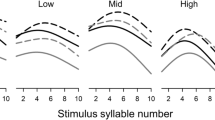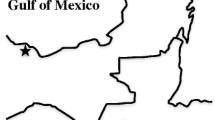Abstract
Animals in captivity experience drastically different selective pressures than their wild counterparts. This can cause evolutionary divergence in behavior between captive and wild populations. While most research on evolution under captivity has focused on vertebrates, we expect similar behavioral changes in insects that live and breed in commercial facilities. Using the common house cricket, Acheta domesticus, we tested how crickets reared in captivity for many generations differed from wild-caught counterparts in two aspects of social behavior: male aggression and female responsiveness to male calling song. Acheta domesticus is an important model organism for behavioral research and are often reared in dense, commercial facilities with ad-libitum access to food and no risk of mortality from predators— very different conditions from the wild. We predicted that commercially-derived males would exhibit less intrasexual aggression due to selection from living in dense conditions. We predicted that commercially-derived females would be less responsive to male calling song because they are more likely to encounter many males at random. Instead, we found that commercially-derived males were more aggressive than wild ones, and that commercially-derived and wild females did not differ in responsiveness to calling song. Insects serve as model systems for a great deal of research in evolutionary and behavioral biology. If these animals are evolving in captivity, they may not provide an accurate representation of the natural phenomena we aim to understand.



Similar content being viewed by others

Data Availability
The raw data for this study can be found in the Mendeley Data repository (https://doi.org/10.17632/mhnvkd54cx.1).
References
Adamo SA, Hoy RR (1995) Agonistic behaviour in male and female field crickets, Gryllus bimaculatus, and how behavioural context influences its expression. Anim Behav 49:1491–1501
Alexander RD (1961) Aggressiveness, territoriality, and sexual behavior in field crickets (Orthoptera: Gryllidae). Behaviour 17:130–223
Altizer SM, Oberhauser KS (1999) Effects of the protozoan parasite Ophryocystis elektroscirrha on the fitness of monarch butterflies (Danaus plexippus). J Invertebr Pathol 74:76–88
Altizer SM, de Roode J (2010) When butterflies get bugs: the ABCs of lepidopteran disease. American Butterflies. 16–27
Antonellie TS, Leischner CL, Ososky JJ, Harstone-Rose A (2016) The effect of captivity on the oral health of the critically endangered black-footed ferret (Mustela nigripes). Can J Zool 94:15–22
Attard CRM, Möller LM, Sasaki M et al (2016) A novel holistic framework for genetic-based captive-breeding and reintroduction programs. Conserv Biol 30:1060–1069
Bailey N, Zuk M (2008) Acoustic experience shapes female mate choice in field crickets. Proc R Soc B 275:2645–2650
Bee MA, Micheyl C (2008) The cocktail party problem: what is it? How can it be solved? And why should animal behaviorists study it? J Comp Psychol 122:235–251
Bello-Hellegouarch G, Potau JM, Arias-Martorell J et al (2013) Brief communication: morphological effects of captivity: a geometric morphometric analysis of the dorsal side of the scapula in captive-bred and wild-caught hominoidea. Am J Phys Anthropol 152:306–310
Benjamini Y, Hochberg Y (1995) Controlling the false discovery rate: a practical and powerful approach to multiple testing. J Royal Stat Soc 57:289–300
Bertin A, Pavinato VAC, Parra JRP (2017) Fitness-related changes in laboratory populations of the egg parasitoid Trichogramma galloi and the implications of rearing on factitious hosts. BioControl 62:435–444
Boppré M, Vane-Wright R (2012) The butterfly house industry: conservation risks and education opportunities. Conserv Soc 10:285
Bordeleau X, Hatcher BG, Denny S et al (2018) Consequences of captive breeding: fitness implications for wild-origin, hatchery-spawned Atlantic salmon kelts upon their return to the wild. Biol Conserv 225:144–153
Bradley CA, Altizer S (2005) Parasites hinder monarch butterfly flight: implications for disease spread in migratory hosts. Ecol Lett 8:290–300
Brower LP, Fink LS, Van A et al (1995) On the dangers of interpopulational transfers of monarch butterflies. BioScience 45:540–544
Brown WD, Smith AT, Moskalik B, Gabriel J (2006) Aggressive contests in house crickets: size, motivation and the information content of aggressive songs. Anim Behav 72:225–233
Buena LJ, Walker SE (2008) Information asymmetry and aggressive behaviour in male house crickets, Acheta domesticus. Anim Behav 75:199–204
Cameron SA, Lozier JD, Strange JP et al (2011) Patterns of widespread decline in north American bumble bees. Proc Natl Acad Sci 108:662–667
Christie MR, Ford MJ, Blouin MS (2014) On the reproductive success of early-generation hatchery fish in the wild. Evol Appl 7:883–896
Christie MR, Marine ML, Fox SE et al (2016) A single generation of domestication heritably alters the expression of hundreds of genes. Nat Commun 7:1–6
Courtney Jones SK, Byrne PG (2017) What role does heritability play in transgenerational phenotypic responses to captivity? Implications for managing captive populations. Zoo Biol 36:397–406
Duong TY, Scribner KT (2018) Regional variation in genetic diversity between wild and cultured populations of bighead catfish (Clarias macrocephalus) in the Mekong Delta. Fish Res 207:118–125
Frankham R (2008) Genetic adaptation to captivity in species conservation programs. Mol Ecol 17:325–333
Funato T, Nara M, Kurabayashi D et al (2011) A model for group-size-dependent behaviour decisions in insects using an oscillator network. J Exp Biol 214:2426–2434
Gerhardt HC, Bee MA (2006) Recognition and localization of acoustic signals. In: Narins P, Feng A, Fay R, Popper A (eds) Hearing and sound communication in amphibians, 28th edn. Springer, New York, pp 113–146
Gerhardt HC, Huber F (2002) Acoustic communication in insects and anurans: common problems and diverse solutions. University of Chicago Press, Chicago
Gilad T, Koren R, Moalem Y et al (2018) Effect of continuous and alternating episodes of starvation on behavior and reproduction in the red flour beetle. J Zool 305:213–222
Goulson D, Hughes WOH (2015) Mitigating the anthropogenic spread of bee parasites to protect wild pollinators. Biol Conserv 191:10–19
Gray DA (1997) Female house crickets, Acheta domesticus, prefer the chirps of large males. Anim Behav 54:1553–1562
Hack MA (1997) Assessment strategies in the contests of male crickets, Acheta domesticus (L.). Anim Behav 53:733–747
Hales KG, Korey CA, Larracuente AM, Roberts DM (2015) Genetics on the fly: a primer on the Drosophila model system. Genetics 201:815–842
Hedrick AV, Dill LM (1993) Mate choice by female crickets is influenced by predation risk. Anim Behav 46:193–196
Hoffmann AA, Ross PA (2018) Rates and patterns of laboratory adaptation in (mostly) insects. J Econ Entomol 111:501–509
Horch HW, Mito T, Popadić A, Ochuci H, Noji S (eds) (2017) The cricket as a model organism: development, regeneration, and behavior. Springer Japan, Tokyo
Iba M, Nagao T, Urano A (1995) Effects of population density on growth, behavior and levels of biogenic amines in the cricket, Gryllus bimaculatus. Zool Sci 12:695–702
Jessup CM, Kassen R, Forde SE et al (2004) Big questions, small worlds: microbial model systems in ecology. Trends Ecol Evol 19:189–197
Kapoor V, Antonelli T, Parkinson JA, Hartstone-Rose A (2016) Oral health correlates of captivity. Res Vet Sci 107:213–219
Killian KA, Allen JR (2008) Mating resets male cricket aggression. J Insect Behav 21:535–548
Kokko H, Rankin DJ (2006) Lonely hearts or sex in the city? Density-dependent effects in mating systems. Philos Trans R Soc Lond B Biol Sci 361:319–334
Lawrence M, Mastromonaco G, Goodrowe K et al (2017) The effects of inbreeding on sperm morphometry of captive-bred endangered mammals. Can J Zool 95:599–606
Lindsey E, Mehta M, Dhulipala V et al (2009) Crowding and disease: effects of host density on response to infection in a butterfly-parasite interaction. Ecol Entomol 34:551–561
Liu Q, Cui F, Hu P et al (2018) Using of microsatellite DNA profiling to identify hatchery-reared seed and assess potential genetic risks associated with large-scale release of swimming crab Portunus trituberculatus in Panjin, China. Fish Res 207:187–196
Mautz BS, Sakaluk SK (2008) The effects of age and previous mating experience on pre- and post-copulatory mate choice in female house crickets (Acheta domesticus L.). J Insect Behav 21:203–212
McPhee ME (2004) Morphological change in wild and captive. J Mammal 85:1130–1137
Moskalik B, Uetz GW (2011) Female hunger state affects mate choice of a sexually selected trait in a wolf spider. Anim Behav 81:715–722
Mucha S, Komen H (2016) Rates of inbreeding and genetic adaptation for populations managed as herds in zoos with a rotational mating system or with optimized contribution of parents. J Anim Breed Genet 133:323–332
Nelson CM, Nolen TG (1997) Courtship song, male agonistic encounters, and female mate choice in the house cricket, Acheta domesticus (Orthoptera: Gryllidae). J Insect Behav 10:557–570
O’Regan HJ, Kitchener AC (2005) The effects of captivity on the morphology of captive, domesticated and feral mammals. Mammal Rev 35:215–230
Oberhauser KS, Nail KR, Altizer SM (2015) Monarchs in a changing world: biology and conservation of an iconic butterfly. Comstock Publishing Associates, a division of Cornell University Press., Ithaca; London
Ortigosa A, Rowe L (2002) The effect of hunger on mating behaviour and sexual selection for male body size in Gerris buenoi. Anim Behav 64:369–375
Savage KE, Hunt J, Jennions MD, Brooks R (2005) Male attractiveness covaries with fighting ability but not with prior fight outcome in house crickets. Behav Ecol 16:196–200
Scharf I (2016) The multifaceted effects of starvation on arthropod behaviour. Anim Behav 119:37–48
Steff G (2015) Trends observed in fall migrant monarch butterflies (Lepidoptera: Nymphalidae) east of the appalachian mountains at an inland stopover in southern Pennsylvania over an eighteen year period. Ann Entomol Soc Am 108:718–728
Stevenson PA, Rillich J (2013) Isolation associated aggression - a consequence of recovery from defeat in a territorial animal. PLoS One 8:1–11
Stoffer B, Walker SE (2012) The use of multimodal communication in mate choice decisions by female house crickets , Acheta domesticus. Anim Behav 83:1131–1138
Travers SE, Sih A (1991) The influence of starvation and predators on the mating behavior of a semiaquatic insect. Ecology 72:2123–2136
Turner TR, Cramer JD, Nisbett A, Gray JP (2016) A comparison of adult body size between captive and wild vervet monkeys (Chlorocebus aethiops sabaeus) on the island of St. Kitts. Primates 57:211–220
Wedell N, Gage MJG, Parker GA (2002) Sperm competition, male prudence, and sperm limited females. Trends Ecol Evol 17:313–320
Wiley RH (2013) Signal detection, noise, and the evolution of communication. In: Brumm H (ed) Animal signals and communication, 2nd edn. Springer-Verlag, Berlin, pp 7–30
Wiley RH (2015) Evolution of signalers and receivers. In: Noise matters. pp 127–268
Winther RG, Giordano R, Edge MD, Nielsen R (2015) The mind, the lab, and the field: three kinds of populations in scientific practice. Stud Hist Philos Sci C 52:12–21
Zuccarelli MD (2004) Comparative morphometric analysis of captive vs. wild African lion (Panthera leo) skulls. Bios 75:131–138
Zuk M, Garcia-Gonzalez F, Herberstein ME, Simmons LW (2014) Model systems, taxonomic bias, and sexual selection: beyond Drosophila. Annu Rev Entomol 59:321–338
Acknowledgements
We thank David Gray from California State University, Northridge for providing us with a wild population of crickets; and Vance Noland from Fluker’s Cricket Farm for providing valuable information about their commercial facility. This work was made possible through partial financial support from the National Science Foundation. This work was also supported by University of Minnesota Undergraduate Research Opportunities Program awards to N. Deak and X. Tan. Sincere gratitude to the National Science Foundation Graduate Research Fellowship Program and the Ford Foundation Pre-Doctoral Fellowship Program, administered by the National Academies of Science, Engineering, and Medicine, for their support of R. Olzer.
Author information
Authors and Affiliations
Corresponding author
Ethics declarations
Conflict of Interest
The authors declare that they have no conflicts of interest.
Additional information
Publisher’s Note
Springer Nature remains neutral with regard to jurisdictional claims in published maps and institutional affiliations.
Rights and permissions
About this article
Cite this article
Olzer, R., Deak, N., Tan, X. et al. Aggression and Mating Behavior in Wild and Captive Populations of the House Cricket, Acheta domesticus. J Insect Behav 32, 89–98 (2019). https://doi.org/10.1007/s10905-019-09715-y
Received:
Revised:
Accepted:
Published:
Issue Date:
DOI: https://doi.org/10.1007/s10905-019-09715-y



